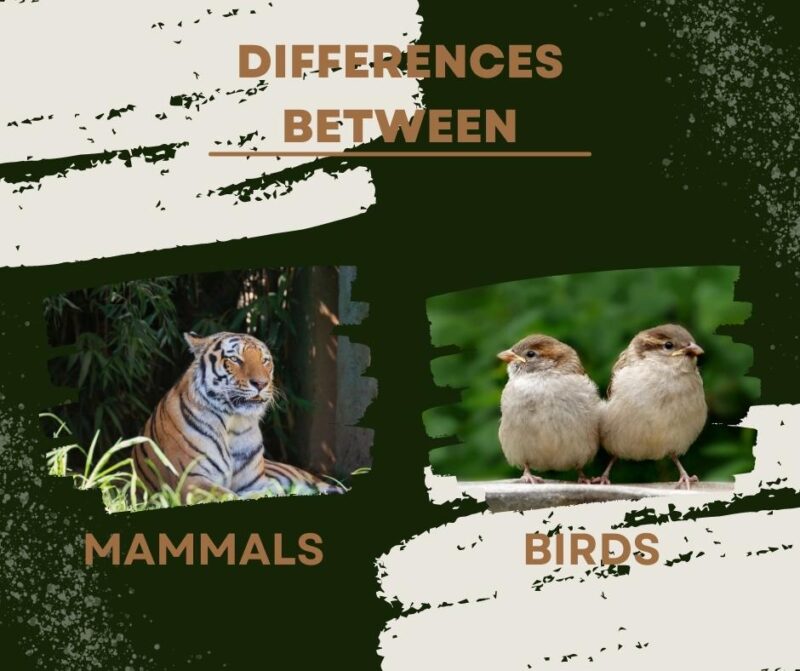When it comes to the diverse natural world we live in, it’s crucial to understand the distinguishing factors between the various species. Two major classes of animals, mammals, and birds, both share fascinating aspects, but they also have many key differences.
Let’s take a dive into this exploration, and by the end, you’ll be equipped to tell these two classes apart with ease.
Visual Comparison
| Mammals | Birds | |
|---|---|---|
| Body Covering | Hair or Fur | Feathers |
| Metabolism | Lower | Higher |
| Offspring | Live Birth | Eggs |
| Parental Care | Extended, with nursing | Varies, no nursing |
| Lungs | Spongy, sac-filled | Air sacs, continuous airflow |
| Locomotion | Diverse (walking, running, swimming, flying) | Primarily flight (some exceptions) |
| Heart and Circulation | Four-chambered heart, double circulation | Four-chambered heart, efficient double circulation |
| Sensory Perception | Strong smell and hearing, variable vision | Excellent vision, variable smell and hearing |
| Vocal Communication | Less common, less complex | Frequent, often complex |
| Lifespan | Varies, often several decades | Varies, often several years to decades |
| Diet and Teeth/Beak | Varied diet, specialized teeth | Varied diet, specialized beaks |
| Adaptation to Environments | Terrestrial and marine habitats | Almost every available habitat |
| Social Structures | Varies from solitary to social | Varies from solitary to gregarious |
| Brain Size and Intelligence | Larger brain/body size ratio, high intelligence in some | Smaller brain/body size ratio, high intelligence in some |
| Conservation Status | Many endangered species | Many endangered species |
Physical Attributes: Fur vs. Feathers
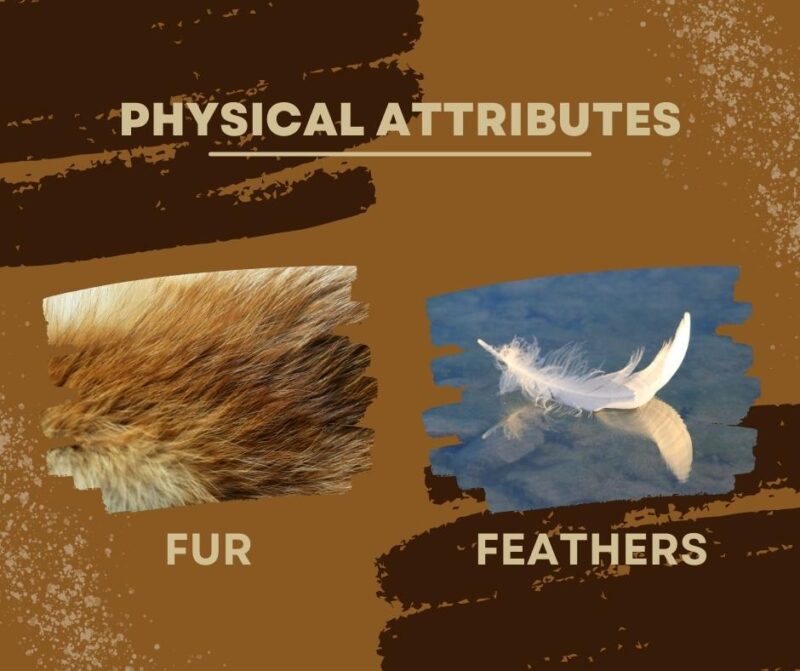
Mammals, ranging from the smallest bats to the massive blue whales, have a common feature: hair or fur. The presence of hair is a defining characteristic for mammals. They may not always be fluffy like a rabbit or a bear, but even marine mammals like whales and seals have hair at some stage of their life.
Birds, on the other hand, are covered in feathers. These feathers aren’t merely for show; they play a critical role in thermoregulation and, of course, flight. While some birds may seem ‘hair-like’ (the whiskers on a kiwi bird, for example), this is a type of specialized feather, not true hair.
Warm-Blooded Wonders: Homeothermy and Metabolism
Both mammals and birds are warm-blooded, or homeothermic, meaning they maintain a constant internal body temperature. However, their metabolic rates differ significantly due to their varying lifestyles and physical demands.
Birds, particularly those capable of sustained flight, have incredibly high metabolic rates. This elevated metabolism aids them in maintaining the massive amount of energy required for flight. Mammals, in comparison, typically have a lower metabolic rate, as they don’t have such high constant energy demands.
Bearing Offspring: Live Birth vs. Egg-Laying
One of the most well-known distinctions between mammals and birds is their method of reproduction. Mammals give birth to live young, a process known as viviparity. After conception, the embryo develops inside the mother’s body in a special organ, the uterus.
Birds, conversely, lay eggs — a process known as oviparity. The offspring develop inside these eggs outside the mother’s body. The hard calcareous shell of the egg protects the embryo while it develops, and the parent birds often incubate the eggs to maintain the appropriate temperature.
Raising the Young: Parental Care
There are significant differences in the way mammals and birds raise their young. Mammal offspring are often helpless at birth and require substantial parental care. Mother mammals nurse their young with milk, a nutrient-rich substance produced by the mother’s mammary glands — another defining feature of mammals.
Birds also show various degrees of parental care, from leaving the hatchlings to fend for themselves to extended periods of feeding and protection. Unlike mammals, both bird parents frequently share these duties, and they feed their young a diet consisting of pre-digested food or small prey, not milk.
Respiration: Lungs and Air Sacs
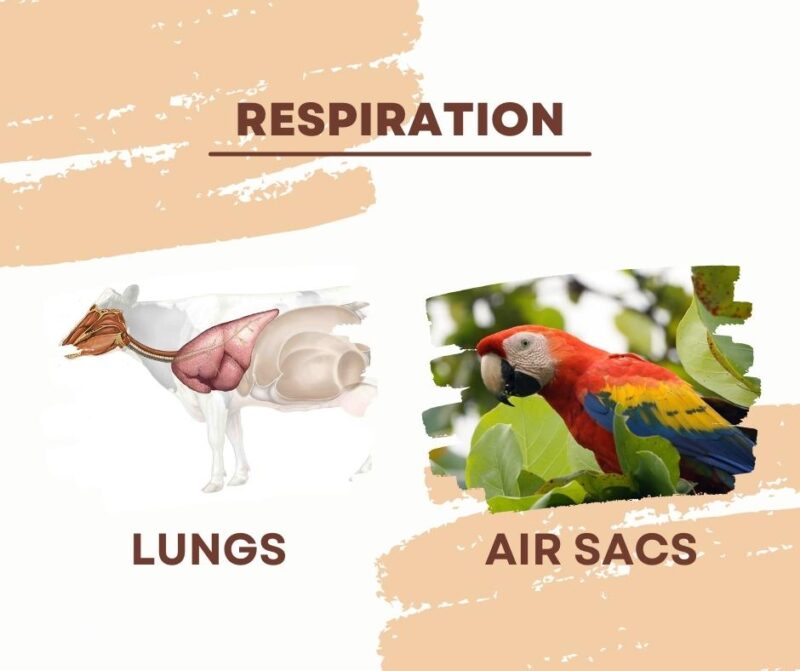
Mammals and birds both respire using lungs, but the structure and function of these lungs are quite different. Mammalian lungs are somewhat like a sponge, full of millions of tiny sacs where oxygen is absorbed. Bird lungs are more complex and efficient.
They incorporate a system of air sacs that extend throughout the body, which allows for a continuous flow of air through the lungs, even during exhalation. This system is part of what enables birds to manage the high energy demands of flight.
Locomotion: Legs, Wings, and Fins
The means of locomotion is another distinctive area between mammals and birds. Mammals show an impressive variety of locomotion techniques, including walking, running, swimming, hopping, climbing, burrowing, and even flying (in the case of bats).
Birds are generally adapted for two types of movement: flight and perching. Of course, there are exceptions, such as penguins that are adapted for swimming and ostriches that are adapted for running. But unlike mammals, flight is a primary mode of locomotion for many bird species.
Heart and Blood Circulation: Four Chambers vs. Three Chambers
Although both mammals and birds have a four-chambered heart, their structure, size, and functioning are different. Mammalian hearts are relatively larger in comparison to body size, while avian hearts are smaller and beat faster.
In terms of circulation, both groups use a double circulation system: systemic circulation (body) and pulmonary circulation (lungs). However, the efficiency of the avian circulatory system is often superior due to their demanding energy expenditure.
Sensory Perception: Senses and Sensibility
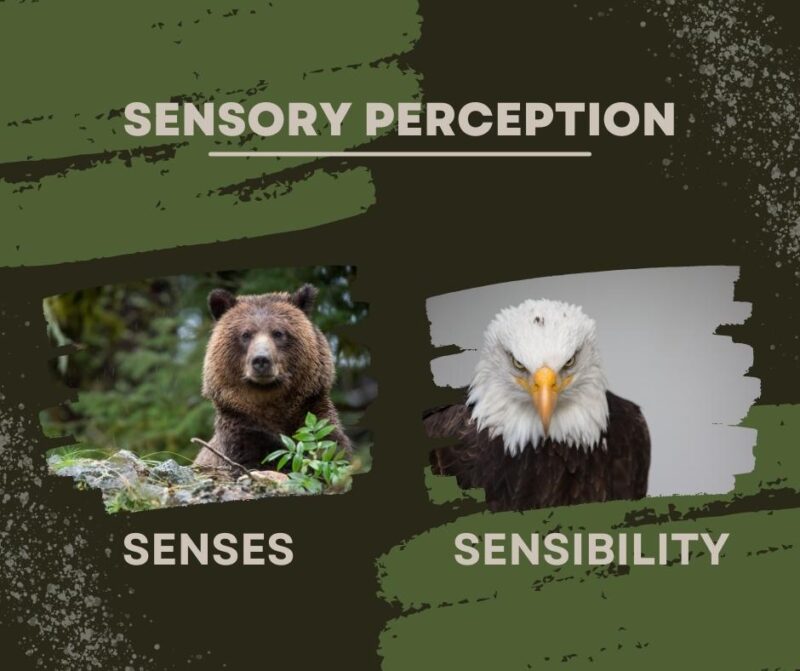
The sensory abilities of mammals and birds differ widely and are adapted to their specific environmental needs. Mammals typically have a strong sense of smell and hearing, and their vision ranges from color to black and white.
Birds typically have excellent vision, with some birds of prey having the best eyesight of any animal. Many of them can also see ultraviolet light. Their sense of smell and hearing, however, isn’t as strong as in many mammals, although there are exceptions.
Vocal Communication: Songs vs. Calls
Birds are known for their vocalizations — their songs and calls can be heard throughout forests and backyards worldwide. These sounds play a crucial role in attracting mates, defending territory, and social interaction.
Some species, like parrots and songbirds, have a specialized vocal organ, the syrinx, that allows them to produce diverse and complex sounds. Mammals also use vocalization, but not as commonly or complexly as birds. Some mammals (like whales and bats) use sophisticated vocalizations for communication, but many rely more on non-vocal signals, like scent-marking or body language.
Lifespan and Aging: Live Long and Prosper
The lifespan of both birds and mammals varies significantly among species. Some small mammals, like mice, may live only a few years, while larger mammals, like elephants or whales, can live for several decades. Bird lifespans also range from a few years to several decades.
In general, larger ones tend to live longer than smaller ones. Interestingly, some of them, like parrots and certain species of seabirds, can outlive many mammal species, including humans!
Diet and Dentition: Omnivores, Herbivores, Carnivores, and More
Mammals exhibit a wide range of dietary habits, and their teeth reflect this diversity. Carnivorous mammals have sharp, pointed teeth for tearing meat, herbivores have flat, ridged teeth for grinding plants, and omnivores have a combination of both.
Birds don’t have teeth. Instead, they have beaks, and the size and shape of the beak can tell us a lot about what they eat. They may be carnivores, herbivores, omnivores, insectivores, or have specialized diets like nectar.
Adaptation to Environments: Masters of Every Domain
Mammals and birds have both adapted to a wide variety of environments on Earth. Mammals can be found in nearly every terrestrial and marine habitat, from the hottest deserts to the coldest Arctic tundra, from mountain peaks to the depths of the oceans.
Birds, with the power of flight, have also colonized almost every available habitat on Earth. From the coldest polar regions to the hottest deserts, from dense forests to open seas, birds have evolved various adaptations to survive and thrive.
Social Structures: Lone Rangers and Community Builders
Mammalian social structures are incredibly varied. Some mammals are solitary, only coming together to mate, while others live in complex social groups, like the pods of dolphins or the pride of lions. These social structures often involve hierarchies and defined roles within the group.
Bird social structures are also diverse. Many species are gregarious and form large flocks. Other ones are solitary or form monogamous pairs during the breeding season. Some of them, like the African weaver birds, even built communal nests where entire colonies lived together.
Brain Size and Intelligence: Brainiacs of the Animal Kingdom
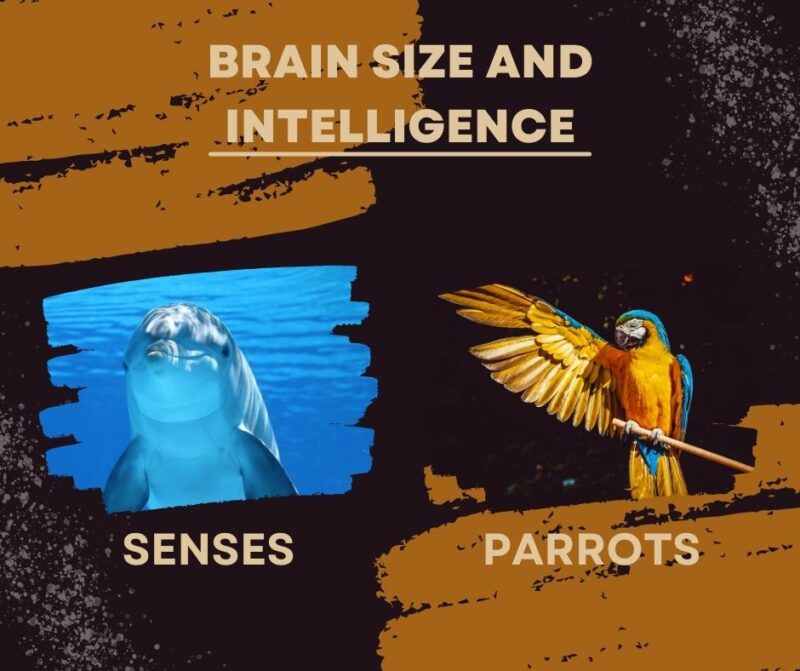
The brain size of mammals and birds relative to their body size can give us some insight into their potential cognitive abilities. Generally, mammals, particularly primates and cetaceans (whales and dolphins), have larger brains for their body size than birds.
However, some species, particularly corvids (crows and ravens) and parrots, are known for their impressive cognitive abilities, including problem-solving, tool use, and even some form of understanding of future events — capabilities once thought unique to mammals.
Conservation Status: Threats and Challenges
Unfortunately, both mammals and birds face significant conservation challenges. Habitat loss, climate change, hunting, and pollution are major threats. Many species, such as the Sumatran tiger among mammals and the kakapo parrot among birds, are critically endangered.
Efforts are underway worldwide to protect and conserve these incredible animals. National parks, marine reserves, wildlife sanctuaries, and conservation breeding programs are some of the ways we’re working to ensure that these creatures continue to thrive on our planet.
Final Words
From the tiniest hummingbird to the largest elephant, the animal kingdom’s diversity is awe-inspiring. Through our exploration of the key differences between mammals and birds, we’ve highlighted how these two classes have adapted to the myriad environments on Earth and the unique strategies they employ for survival. Understanding these differences is not only essential for knowledge’s sake but also for conservation.
Each species, whether it’s a mammal or a bird, plays a crucial role in maintaining the balance of our ecosystems. As we continue to unravel the mysteries of these fascinating creatures, we gain the insights necessary to protect them and ensure the survival of our planet’s rich biodiversity for future generations.
The differences between these two groups are not just fascinating facets of biology but a testament to the marvels of evolution and nature’s ingenuity.
Related Posts:
- Is A Spider An Insect? What Are The Similarities &…
- Four Main Feeding Mechanisms Of Animals - Dining in the Wild
- Why Do Rats Have Tails? These are the Three Main Purposes
- What Is the Difference Between Insects and Spiders?…
- Spot The Difference Between A Male and Female Bear
- Taiga Food Web: Interconnected Relationships between…


